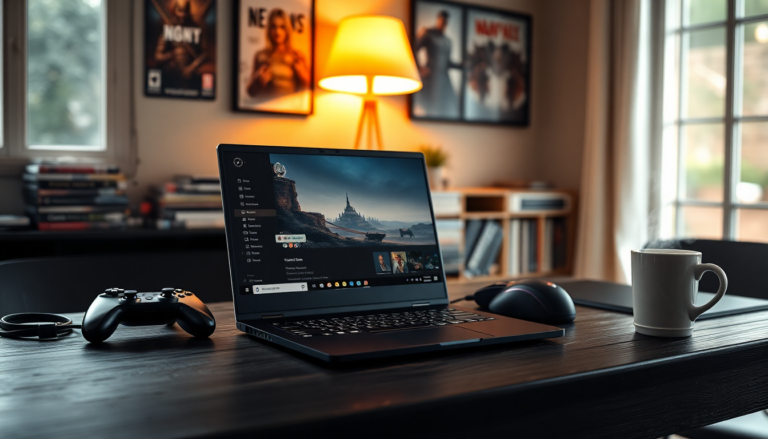Argomenti trattati
In a thrilling development for gamers everywhere, SteamOS has shown impressive gaming performance, often outshining Windows on the Lenovo Legion Go S. A recent report dives into a series of tests that shine a light on the strengths of both platforms, revealing that SteamOS is not just a contender but a serious player in the gaming arena.
SteamOS vs. Windows: The Benchmarking Results
Recent tests by Ars Technica have found that SteamOS either matches or even exceeds Windows gaming performance across five newly released games. The Lenovo Legion Go S stands out as the first device to support both operating systems with official drivers, creating a level playing field for comparison. Impressively, SteamOS outperformed Windows in 10 out of 12 games tested, with only two games resulting in ties. Isn’t it fascinating to see how a new contender can shake things up?
In specific benchmarks, SteamOS showcased significant advantages in popular titles like Returnal, Borderlands 3, and Cyberpunk 2077. For instance, at a resolution of 1200p, SteamOS led in Returnal by nine frames, demonstrating its efficiency. Even at lower settings, SteamOS maintained a similar edge, cementing its status as a robust platform for gamers. How does that sound for gaming enthusiasts looking for the best performance?
Prominent YouTuber Dave2D echoed these findings in his tests, where he observed that SteamOS consistently outshone Windows in multiple titles, including Helldivers 2 and The Witcher 3. His analysis highlights a clear trend: SteamOS is ahead in seven games, with only minor losses in two others. Isn’t it exciting to see such a strong performance from a platform that many might have overlooked?
The Implications for Gamers
So, what does this mean for gamers weighing their options in the PC gaming world? With increasing hardware support for SteamOS—especially if Valve rolls out an installable version for desktop PCs—it poses a legitimate alternative to Windows. This is particularly relevant as gamers express growing frustration with Windows’ bloat and inefficiencies. Are you feeling the same way?
As Microsoft integrates AI features into Windows, many users find themselves overwhelmed by the system’s complexity. In contrast, SteamOS is emerging as a more streamlined option, especially for handheld devices. The user experience on handheld PCs often feels cumbersome under Windows, making SteamOS an appealing choice for those seeking simplicity.
Challenges Facing SteamOS
However, despite its stellar performance, SteamOS does face challenges that could impede widespread adoption. Currently, the platform grapples with hardware compatibility and game availability. While it’s possible to install SteamOS on non-Steam Deck devices, this workaround isn’t ideal and may not provide the same performance benefits seen in recent tests. How can Valve overcome this hurdle?
Additionally, certain games remain incompatible with SteamOS, mainly due to anti-cheat mechanisms that prevent functionality. Nonetheless, Valve is actively working to address these issues, continuously expanding its list of compatible games and enhancing hardware support. Will this lead to a more robust library for SteamOS users?
In contrast, while Microsoft has promised improvements to reduce Windows’ bloat, their track record raises skepticism. Many users are still wary of past experiences, such as the infamous **Games for Windows Live**, as they consider making the switch to alternative systems. With all these factors in play, where do you stand in the ongoing battle between SteamOS and Windows?

